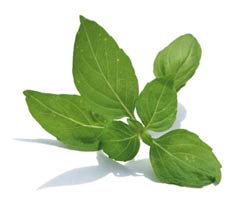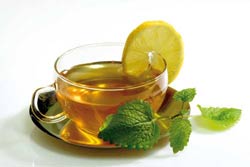Functional foods are foods or components of food that present benefits over and above the basic nutrition they provide. You need not buy exotic organic foods or go to some special store to hunt for these; they are available everywhere. It is just about making the right choices and making sure you include any of the given foods as part of your dietary regimen.
Here are 10 interesting functional foods that can help you manage your diabetes well.
Brown rice

According to top research institutes, whole grains have an important role to play in the management of type-2 diabetes. Brown rice is unpolished and has its germ and bran layers intact. It provides excellent satiety and prevents hunger pangs. It is rich in B-complex vitamins that regulate energy production in the body. The magnesium content in the rice regulates insulin secretion and uptake by cells.
Basil

Basil extracts are often used in the treatment of type-2 diabetes. Basil leaves contain potent antioxidants that relieve oxidative stress; it’s this stress that compounds problems in diabetics. Basil also helps lower triglycerides and the ‘bad’ cholesterol [LDL] keeping a check on heart diseases. Heart disease is a major complication of diabetes.
Green tea

This tea is unfermented and hence has high polyphenol content, which has strong antioxidant and hypoglycaemic effects. The polyphenols help in a controlled release of blood sugars. A study published in the Biomed Central Pharmocology Journal showed that green tea helps manage both type-1 and type-2 diabetes as it has a specific serum protein.
Fish oil

Fish oils are known for their omega-3-fatty acid content. A study published in the Journal of American Medical Association showed that omega-3-fatty acids have the ability to correct the functioning of the pancreas, thus helping in insulin production and uptake. Vitamin D present in fish oils also helps in diabetes by improving immunity. Fish oils [particularly fatty fishes like tuna, sardines and mackerel] help in better control of glucose and lipid metabolism.
Drumstick leaves

The fibre content in the leaves increases satiety and slows the breakdown of food. According to a study published in the International Journal of Health and Nutrition, drumstick leaves are effective in lowering HbA1c levels. Researchers believe that this effect could be due to the presence of various phytochemicals present in the leaves.
Isabgol
Also known as psyllium husk, it is often used as a laxative. When isabgol comes in contact with water, it swells to form a gel-like substance. This slows the breakdown and absorption of blood glucose. Metformin, a drug commonly used in diabetic treatment, can upset your stomach. Isabgol prevents upsetting your tummy. Hence, hypoglycaemic action can be enhanced without any side effects, if isabgol is consumed along with metformin.
Cinnamon

This bark-spice directly helps lower blood sugar, according to a study published by the American Diabetes Association. According to this study, including 1g cinnamon in the diet for a month lowers the blood sugar levels. In fact, the study subjects were able to maintain low blood sugar levels for 20 days, even after stopping cinnamon intake.
Jambul
Jamboline—a glucoside present in the seeds of this Indian plum prevents conversion of starch to sugar, making jambul [also called java plum, Indian blackberry] a special fruit for diabetics. Clinical research suggests that the fruit can significantly lower blood sugar and keep sharp insulin spikes in check. This fruit also has heart-protecting properties. Make sure you use the seeds of this fruit [dried and powdered] as they are key hypoglycaemic agents.
Flax seeds
These tiny brown seeds help prevent complications and even the onset of diabetes. According to a study published in the Journal of Medicinal Food, consuming flax seed reduces postprandial sugar level by 28 per cent. Diabetics can add powdered flax seed to soups, gravies, buttermilk and cookies.
Olive oil

The type of fat used in a recipe is important because of the risk of heart disease diabetics face. Olive oil is rich in monounsaturated fatty acids, which are heart-friendly. These fatty acids do not allow the bad cholesterol [LDL] to clog the heart valves, thus reducing the risk of heart attacks and strokes.
This was first published in the January 2012 issue of Complete Wellbeing.
